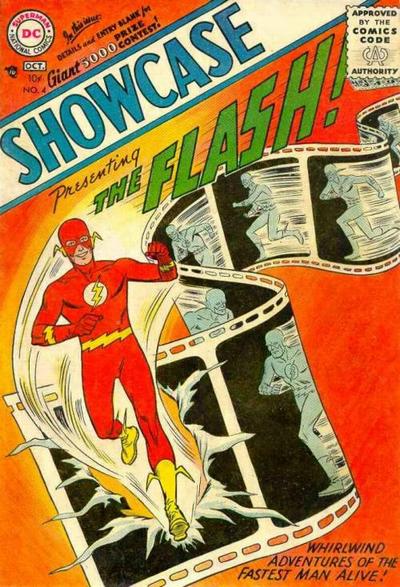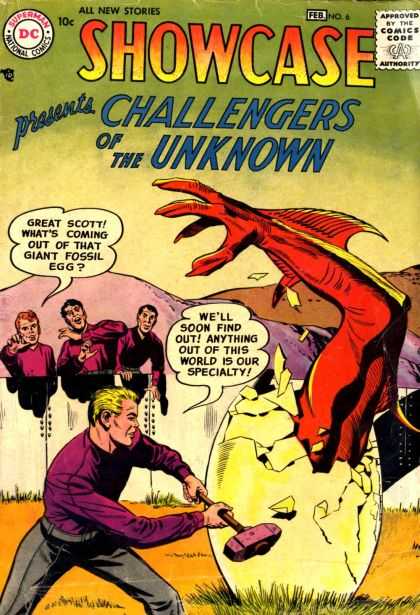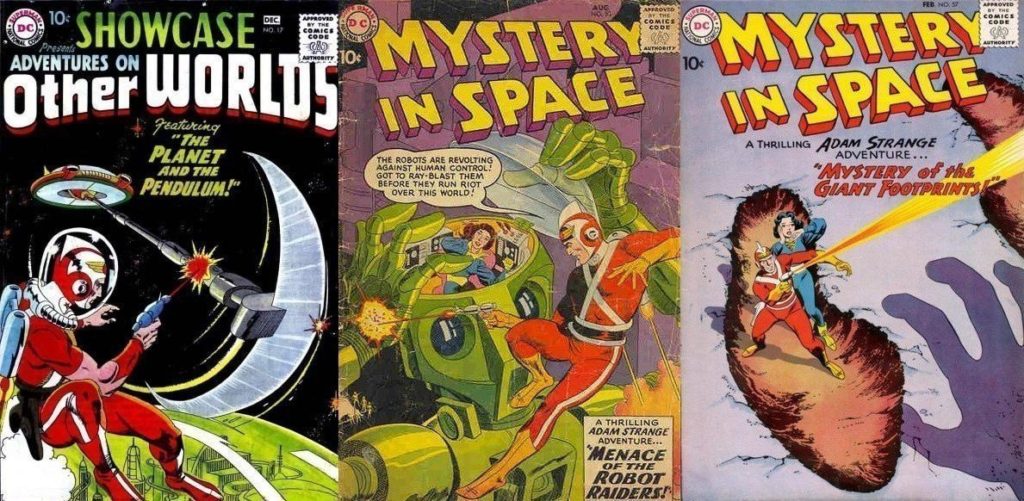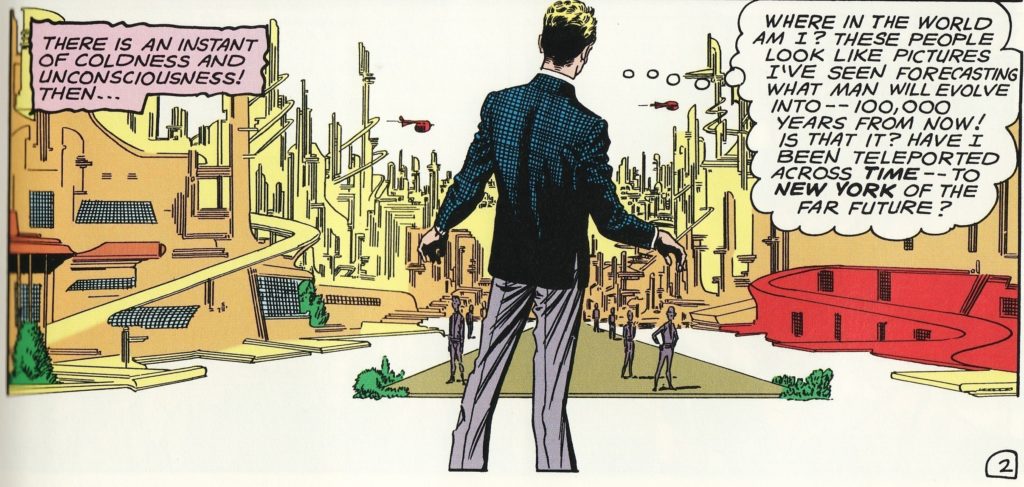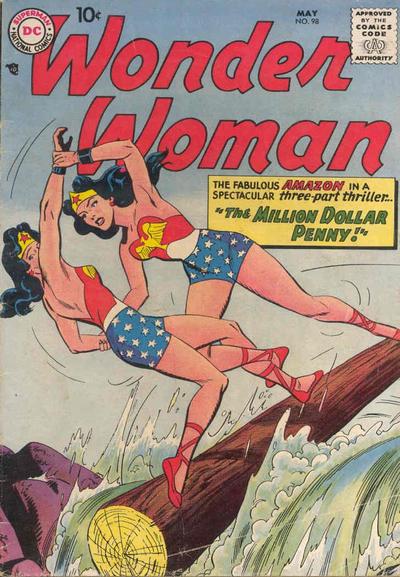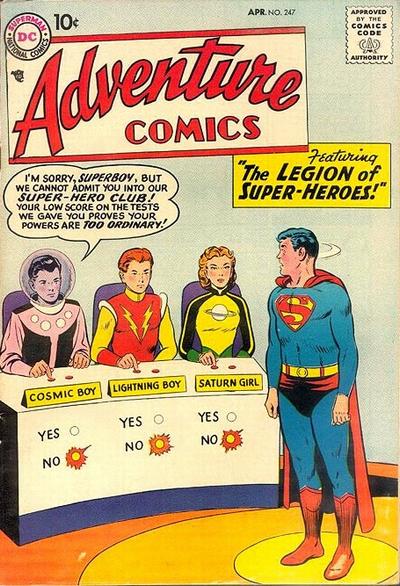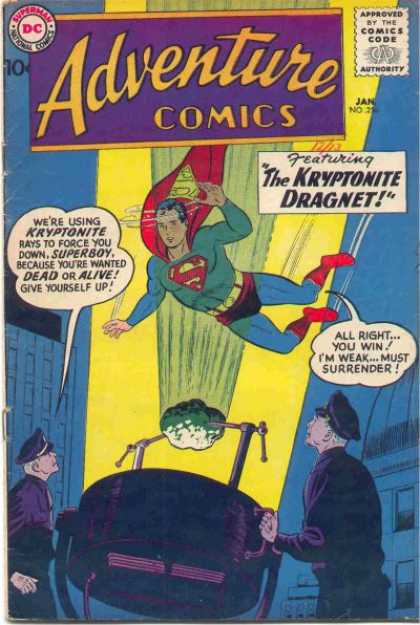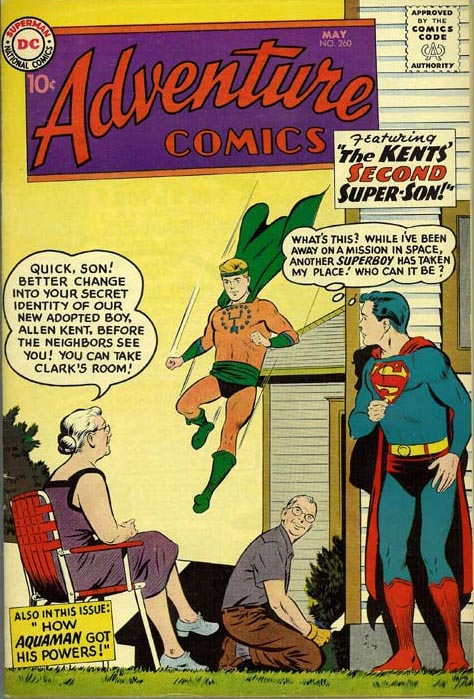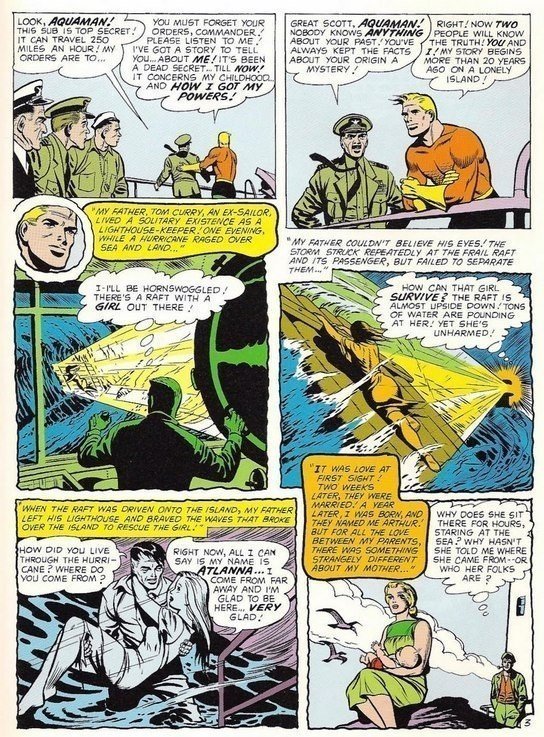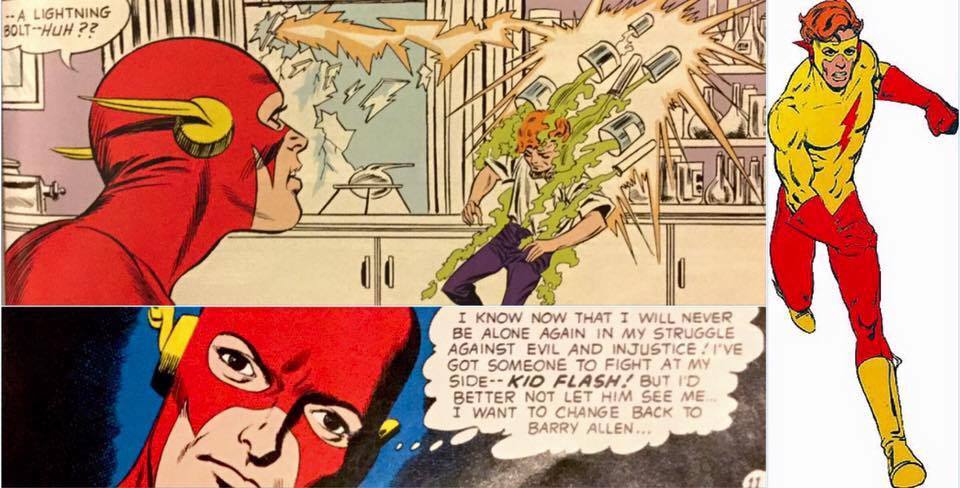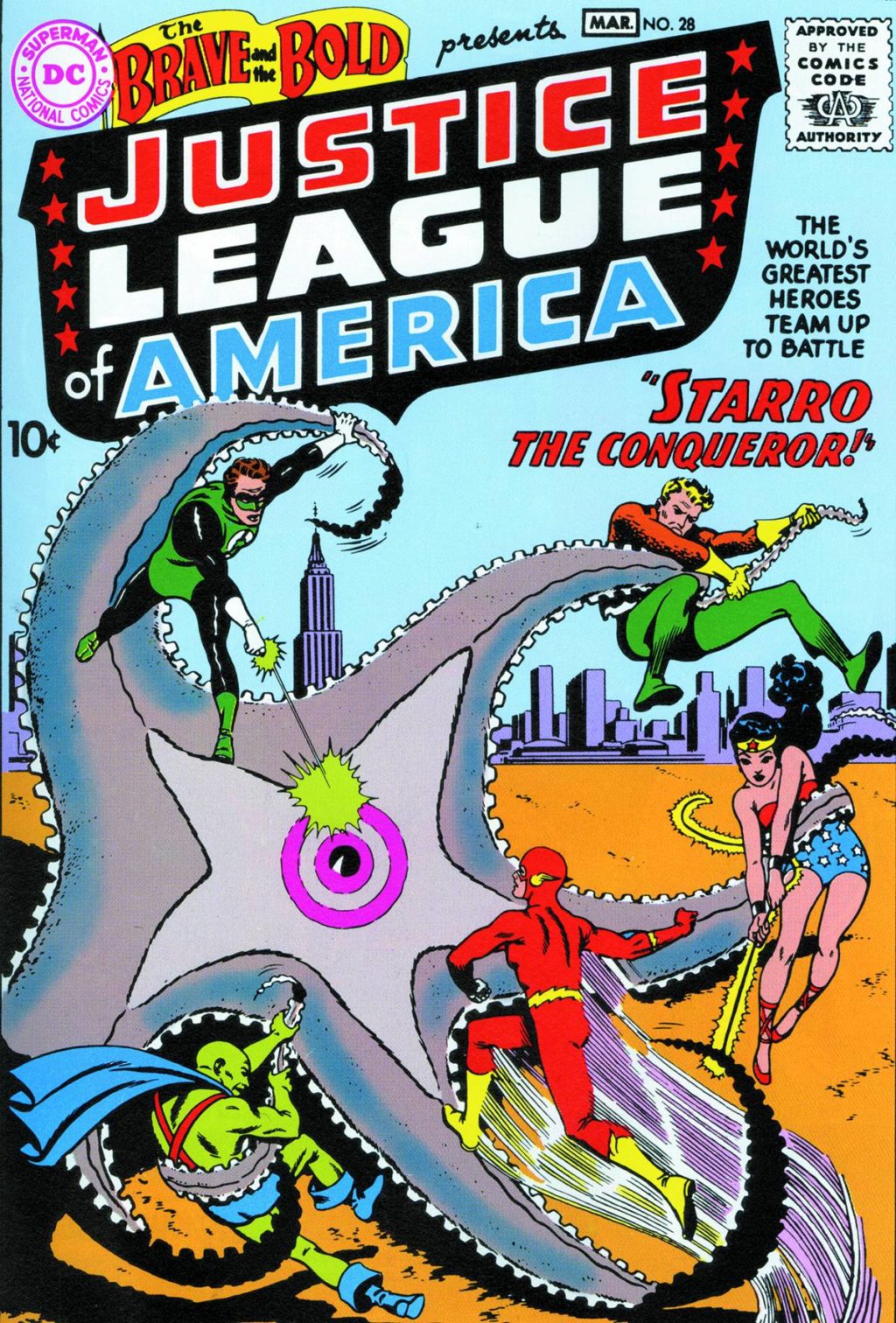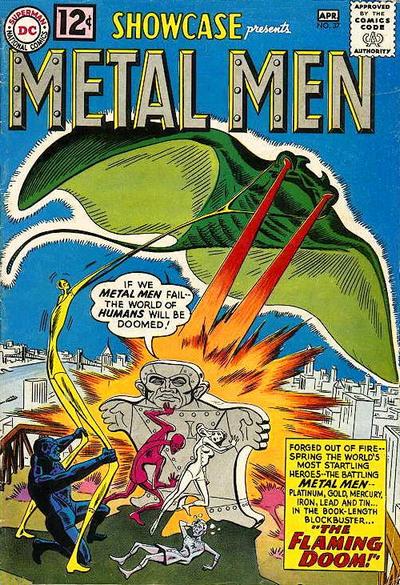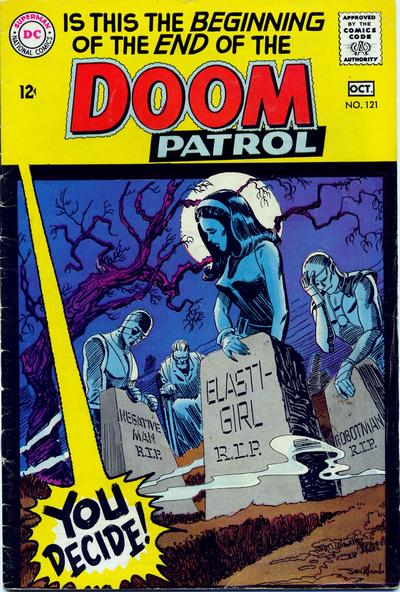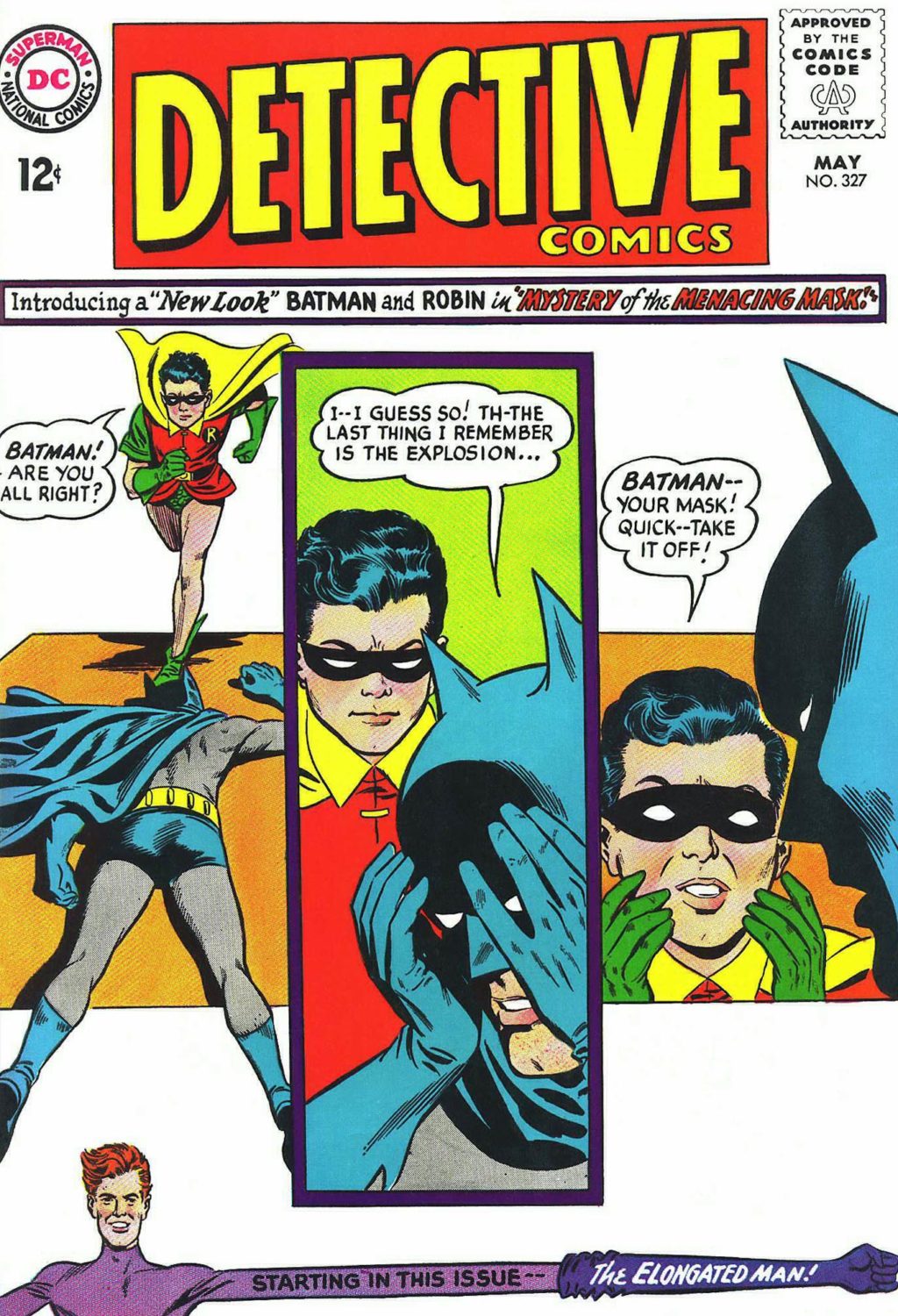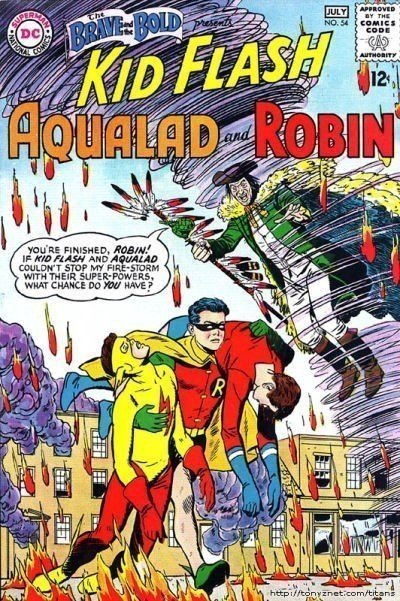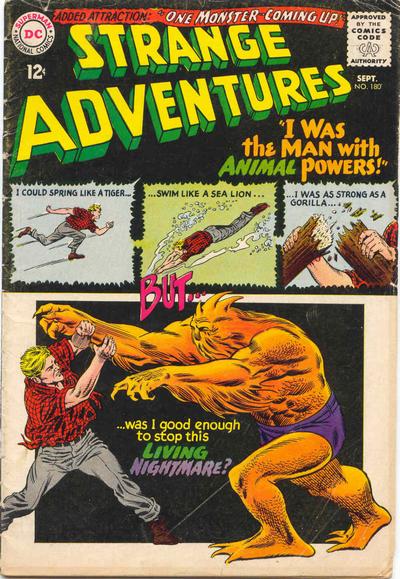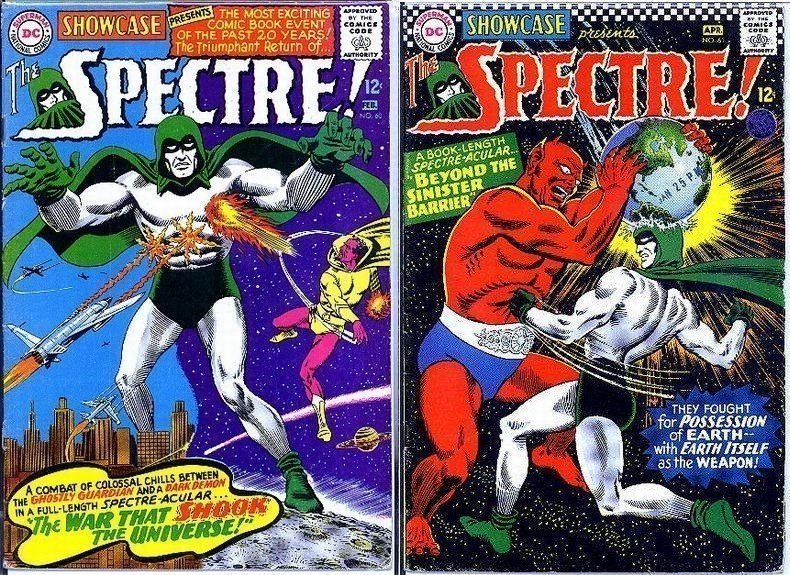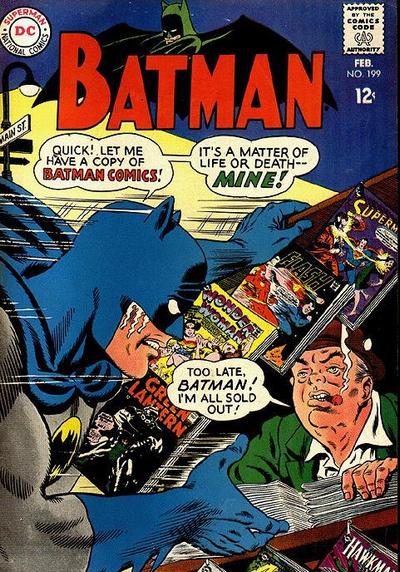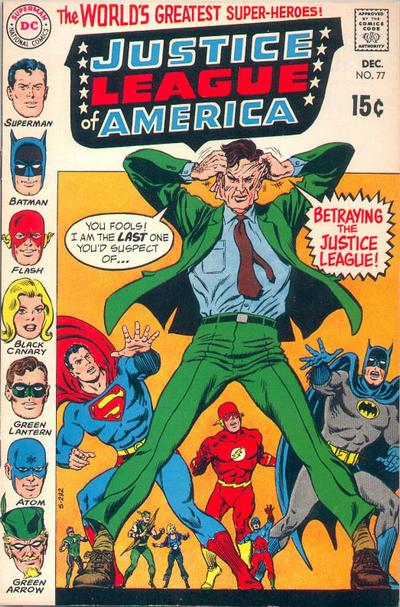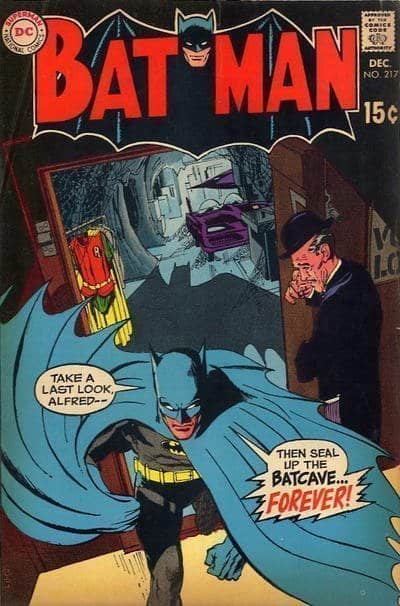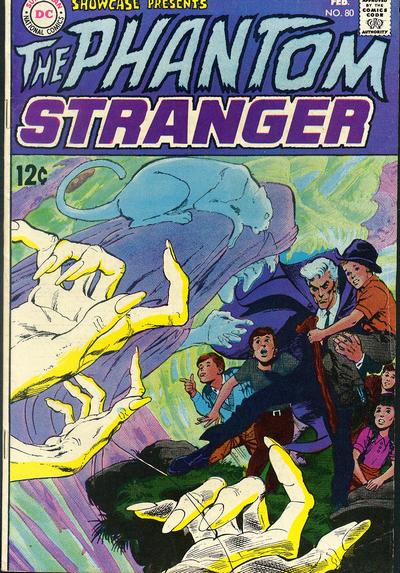Enough about Marvel, What’s up with DC’s Silver Age??? by Alex Grand
Read Alex Grand’s Understanding Superhero Comic Books published by McFarland Books in 2023 with Foreword by Jim Steranko with editorial reviews by comic book professionals, Jim Shooter, Tom Palmer, Tom DeFalco, Danny Fingeroth, Alex Segura, Carl Potts, Guy Dorian Sr. and more.
In the meantime enjoy the show:
We’ve spent alot of time talking about various factors behind Marvel’s Silver Age, but we forget that DC was a company with characters that started off the Superhero Golden Age and found some new traction in the 1950’s and 1960s that inspired Marvel to follow suit in its own way.
read below and/or click the video:
*
*
We also spoke briefly in our first episode about the Silver Age, however we want to go more in depth into specifically DC’s Silver Age in this episode. To be clear, when people refer to DC’s Silver Age they may be referring to a few things, the popular clean penciling aesthetic at the time, or the introduction of new sci-fi based characters with a wonder into the possibilities of science and technology and a particular story formula of an average guy getting powers through a bizarre sci-fi event, or simply a retcon of a Golden Age superhero. Oddly enough, those first couple ways of looking at the beginning of DC’s Silver Age is broken down into these three comics:
Superman’s Pal Jimmy Olsen 1, 1954 is particularly important because Curt Swan started drawing Superman regularly in his distinctive penciling art style under editor, Mort Weisinger.
This issue is before the Comics Code, however it was clean and child friendly fun and part of the push toward child readers who were also watching the George Reeves Adventures of Superman TV show that ran from 1952 – 1958. Although Mort Weisinger was editor of Superman for a while, the aesthetic of Curt Swan on Superman would go on to define a particular “clean” penciling style that would move on to become the DC house look of the 1950s and 1960’s. Curt Swan would go on to pencil Superman for 3 decades so this was clearly influential, and when people imagine Silver Age Superman, they imagine Curt Swan’s pencils. However, some fans point to Detective Comics 225, 1955 as the start of the Silver Age.
This is simply because not all people define the Silver Age by purely aesthetic, some people define it as the introduction of a new sci-fi character that would be repeatedly used during the 1950’s and 1960’s so this occasionally gets brought up into the discussion. This issue introduces the Martian Manhunter who would join the later Silver Age team, the JLA. However, the majority of fans/readers start off the Superhero Silver Age with Showcase 4, 1956.
This comic has a particular type of origin story that would start off many me-too stories of this era, simply being about a normal average human being transformed by a bizarre science fiction event into something superhuman. This origin story would be used repeatedly in both DC’s and Marvel’s Superhero Silver age, however it would also benefit from a clean penciling house style similar to Curt Swan with sleak pencils by Carmine Infantino. This book combines all 3 Silver Age traits as far as aesthetic, science fiction character with a normal person transformed into Superhuman, and it was a retcon of a golden age superhero.
The pencils by Infantino and plot.story by Robert Kanigher with science fiction physics and optimism of its implications introduced by editor, Julius Schwartz stretched the imagination of the young comic book reader and setting a tone for what the DC Silver Age would be about. The Showcase series in general would be a great tryout comic book that its editors including Julius Schwartz and Mort Weisinger would try out a great deal of new Silver Age characters that would go on to populate the DC universe. Showcase 6, 1957 by Jack Kirby (yes, the same Jack Kirby that would go on to invigorate Marvel’s Silver Age as discussed in previous episodes) and credited writer, Dave Wood premiered the Challengers of the Unknown.
This was about a group of adventurers that were transformed by a near death experience to face extraordinary situations and villains. This template of characters were used later to generate the Fantastic Four in 1961. In 1957, Showcase 9 premiered Superman’s Girl Friend Lois Lane.
By today’s standards, this comic appears silly but was significant in that it attempted to gather more female readers, and continued the trend of Jimmy Olsen 1, 1954 to create more silly kid friendly situations that highlighted Superman’s human cast and their day to day adventures instead of the hero himself. A quality of the Silver Age is that it was notoriously asexual, so Girl Friend is separated into two words as to not try to confuse the two for having any actual physical relationship. In Showcase 17, 1958 editor Julius Schwartz had an idea of the first man in space named Adam Strange.
Murphy Anderson designed the character in a rejected cover and Gil Kane drew the approved cover for Showcase 17, 1958. The series was penciled by Mike Sekowsky but really took off when Carmine Infantino took over in 1959, and reached its peak when Murphy Anderson inked him starting in Mystery in Space 57, 1960. This 1961 Mystery in Space 72 panel is a shining example of the perspective and architecture design of Intantino and Anderson. To be whisked away in a teleportation beam and suddenly see a futuristic cityscape rather than the mundane everyday world we’re used to, was something that any sci-fi fan can understand. Panels like this show why wonder in science, design, artistic visuals with logical reasoning to be the best human one can be is a major reason why this team’s Adam Strange was a jewel of the DC Silver Age
Wonder Woman 98, 1958 is especially pertinent as far as being a Silver Age retcon of a Golden Age character.
The famous psychologist and bigamist, William Moulton Marston and artist Harry G. Peter created Wonder Woman in 1941, and Marston died in 1947 toward the end of the Golden Age. Harry G. Peter continued to pencil the comic book until 1958 when he was replaced by Silver Age artists Ross Andru and Mike Esposito. Adventure Comics 247, 1958 is notable for Otto Binder and Al Plastino’s creation of the Legion of Superheroes.
This issue is loved by many Silver Age fans because it starts off the super-powered Mythos of the 30th century which would go on to grow and evolve over decades as part of a Superboy back up feature as well as its own comic. Green Lantern was originally a Golden Age character named Alan Scott, but this identity was retconned in the tryout comic Showcase 22 starring Green Lantern in 1959.
The art was sleek by Gil Kane and Joe Giella in the DC House style, a bizarre science fiction event transformed a regular guy into a superhero, and it was a retcon of a Golden Age superhero hence this was clearly an important DC Silver Age marker. The Green Arrow was retconned and given an up to date origin depiction by Jack Kirby with co-writer Ed Herron in Adventure Comics 256, 1959
as the billionaire who was stranded on an island, and learned to hunt and survive.
This retconned Jack Kirby Silver Age Green Arrow origin differs from his golden age origin, and is the one we’ve seen in the popular TV show. So Jack Kirby’s Silver Age creative contributions are not limited only to Marvel. Although Ramona Fradon penciled Aquaman in Adventure Comics, his Silver Age retcon is considered to be in issue 260, 1959
where his origin is changed by writer Robert Bernstein.
Aquaman had been continually used since the Golden Age is various comics, but this retcon is the jumping off point for the character in the Silver Age. Not only is Flash important in setting the tone for the Silver Age,
many fans of that time couldn’t forget Flash 110, 1960 Kid Flash.
This comic was written by John Broome with art by Carmine Infantino and Joe Giella and introduced Wally West as a shy awkward kid and nephew of Flash’s fiance Iris West. He would eventually get his own style costume and appear in the Teen Titans. Just like when the Avengers finally assembled, many of these Silver Age DC characters would assemble in Brave and the Bold 28, 1960 written by Gardner Fox and penciled by Mike Sekowsky with the first appearance of the Justice League of America.
Nothing can unify a bunch of superheroes into one team quite like an Alien invasion and in this case, it is the unforgettable Starro the Conqueror. This issue also introduced a Silver Age side kick to this team named Snapper Carr, who snapped his fingers and was a hip teenager.
Marvel would later have their own Snapper Carr named Rick Jones and both seem patterned off of the Heap’s Side kick Rickie Wood. Snapper would be involved with the end of DC’s Silver Age in 1969. Flash 123, 1961 was a very big deal in the Silver Age because its writer, Gardner Fox and penciler, Carmine Infantino under Editor Julius Schwartz created the DC multiverse with an Earth-1 and an Earth 2.
This essentially explains that the Golden Age continuity difference with the Silver Age retcons are due to the fact that they took place on alternate earths that are separated by a different wave-length existential frequency. Not only that, but it demonstrates that when Flash vibrates his molecules at a particular frequency, he can access that different reality. This type of nod to theoretical quantum mechanics was genius and typical for Julius Schwartz and Gardner Fox, and set up for a whole series of DC multiverse stories like the later Crisis on Infinite Earths. Showcase 37, 1962 introduced the Metal Men by the Silver Age Wonder Woman of Robert Kanigher, Ross Andru and Mike Esposito.
The Metal Men were a kooky band of robots who loved and served their master, Doc Magnus. Another cooky group was the Doom Patrol who first appeared in My Greatest Adventure 80, 1963.
The Doom Patrol was a cast of 4 young undesirable super powered individuals who came together unified under the tutelage of their wheelchaired older leader written by Arnold Drake, Bob Haney and penciled by Bruno Premiani. The writing by Arnold Drake was genius and editor Murray Boltinoff let Drake write things his way for the majority of it, so it reads like a highly intelligent fun action comedy. Bruno Premiani had the clean DC house style but with some extra personality, and the finale had them all shot to death ending a fantastic 5 year run.
There are many similarities to the Uncanny X-Men at this time, but they released at close to the same time so its difficult to ascertain why that is, however this 5 year run by Arnold Drake is literary genius by Arnold Drake and its no wonder he would be hired by Stan Lee to write the X-Men in the late 1960s. In 1964, Batman was spiraling into unprofitability under editor Jack Schiff and artists Bob Kane/Sheldon Moldoff.
Irwin Donenfeld fired Jack Schiff (the same Jack Schiff that got Jack Kirby fired from DC due to a disagreement over their sky masters news paper strip discussed in the atlas implosion CBH episode) from Batman and gave it to Julius Schwartz and Carmine Infantino to revitalize the character and create the “New Look” Batman. Schwartz and Infantino gave up Adam Strange to Jack Schiff which ruined the Adam Strange forever However Batman did well with the transformation and Carmine Infantino wrote in this issue that Bill Finger had written alot of the old Batman stories, instead of Bob Kane by himself. So not only did Bob Kane lose creative control over his character, he also was outed as partially not being a sole creator of the original Batman stories. Another important DC Silver Age Marker is Brave and the Bold 54, 1964 the first appearance of the Teen Titans by writer Bob Haney and Bruno Premiani.
Under the editor, Murray Boltinoff, these side kicks, including the aforementioned Kid Flash united for the first time creating the template for the Teen Titans representing the 1960s teenagers that were looking for more of a voice at the time. Wonder Girl would later join this team in 1965. Brave and the Bold 58, 1964 was written by Bob Haney and penciled by Ramona Fradon.
This comic book his memorable because it introduced Metamorpho, the element man who can change his body chemically. Ramona Fradon, the artist said this was one of the most fun jobs she had because it mixed superhero comic book art with cartooning. Strange Adventures 180, 1965 written by Dave Wood and France Herron with art by Carmine Infantino and George Roussos introduces Animal Man.
A spaceship crashes into earth releasing radiation at Buddy Baker as he happens to walk by at the same time animals escape a zoo. This odd mixture of events gies him his powers, creating a very fun DC Silver Age story. Showcase 60, 61 1966 by Gardner Fox and Murphy Anderson bring back the Spectre from the Golden Age into the new Silver Age.
This quickly turned into a cosmic battle between good and evil on a universal astral plane with iconic covers by Murphy Anderson. Strange Adventures 205, 1967 introduced the character, Deadman.
Arnold Drake, the writer of Doom Patrol, wrote and created Deadman with Carmine Infantino and inker George Roussos. In 1967, Liebowitz and Donnenfeld planned to sell DC to Kinney National Services.
According to an interview from Carmine Infantino, Bob Kane wanted his cut since he owned the Batman property, so Liebowitz paid Kane 1,000,000 dollars and 50,000$ a year for 20 years to let go of his Batman ownership so he could sell DC. This put his Ghost penciler, Sheldon Moldoff out of work turning in his last Batman with issue 199. 1969 was the year that we had some final Silver Age DC stories and when 1970 came about, it was over with various historical factors discussed in the 8 Ages of Comic books CBH episode including Kirby moving back to DC, Weisinger retiring from Superman, Jimmy Hendrix and Janis Joplin dying, as well as the lack of research into the Space Race, however there were some key DC issues that signaled the end of the Silver Age in 1969. Justice League America 77, 1969 was written by Denny O’Neill who would write some very memorable Batman comics with Neal Adams.
This issue has a the cover by Murphy Anderson with interiors by Dick Dillin just like any other Silver Age JLA comic, but Denny O’Neill was young here and likely felt jaded by the current events of the time, and so wrote this story, the betrayal of Snapper Carr. Yes, this fun hip Silver Age teenager grew up into a betraying adult, and it reminded the heroes and us readers, that things werent going to be the same anymore. That things had changed, and there was less optimism going into the 1970s than there was in the swinging Silver Age 1960s. Batman 217, 1969 is also a notable end of the Silver Age story written by Frank Robbins with cover art by Neal Adams and Gaspar Saladino.
This issue, Robin goes to college, and this breakup in the dynamic duo’s group make up helps return Batman to his darker, solo roots. Essentially, like the Snapper Carr JLA issue, this reminded readers that the good old days were over and its time we all grew up into a more jaded, darker 1970s Bronze Age. I choose Showcase 80, 1969 as the last example in this episode for a few reasons.
This story brought back the Phantom Stranger, a suspense horror type character from 1952, which signaled the beginning of the return to pre-code fascination with darkness and horror which was a part of the early 1970s. Another reason this comic is important is because Carmine Infantino brought Neal Adams through the rigid doors of late 1960s DC, and his talent went toward various covers including this issue. Neal Adams was key in the end of the Silver Age since he penciled comics like Deadman and the Uncanny X-Men toward the end of the 1960s taking things to a more realistic and less campy level.
Well this has been a fun episode of CBH. A couple things got DC started on the Silver Age, the comics code authority formed which filtered the content demanding a clean approach, NASA and the scientific innovation of the post war baby boom was showing us that anything is possible with science, and there was a push for various reasons toward a more child friendly approach. This sense of optimism was present in these comics and even in the rigid DC, there was an attitude of “lets try to make some new characters and release them in try out books and see what happens.” As various historical factors came into play during the 1960s, some of them dissapointing as shown in the CBH 8 ages episode, that made its way into the writers and artists so the comic books took a darker tone which shows up in various comics, ending the Silver Age. Cheers.
Join us for more discussion at our Facebook group
check out our CBH documentary videos on our CBH Youtube Channel
get some historic comic book shirts, pillows, etc at CBH Merchandise
check out our CBH Podcast available on Apple Podcasts, Google PlayerFM and Stitcher.
Images are not used to infringe on copyright, but rather for academic purpose.
All images ©DC Comics, Photos ©Their Respective Copyrightholders












